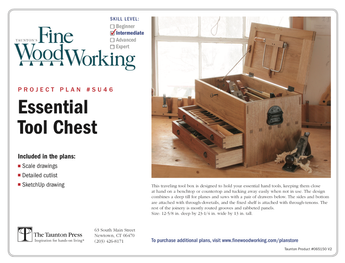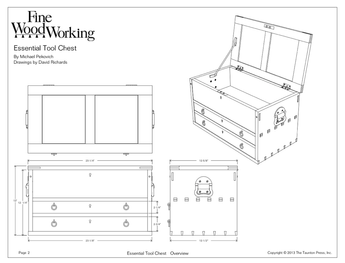Can I use fish glue for the laminate glue up for the rockers on a rocking chair? I hope to use fish glue because of the slow set up time. My concern is that some glues may slip a little in time. I have read everything in Fine Woodworking but no mention of fish glue.
Discussion Forum
Get It All!
UNLIMITED Membership is like taking a master class in woodworking for less than $10 a month.
Start Your Free TrialCategories
Discussion Forum
Digital Plans Library
Member exclusive! – Plans for everyone – from beginners to experts – right at your fingertips.
Highlights
-
Shape Your Skills
when you sign up for our emails
This site is protected by reCAPTCHA and the Google Privacy Policy and Terms of Service apply. -
 Shop Talk Live Podcast
Shop Talk Live Podcast -
 Our favorite articles and videos
Our favorite articles and videos -
E-Learning Courses from Fine Woodworking
-
-
 Fine Woodworking New England Event
Fine Woodworking New England Event -












Replies
Why not use plastic resin glue? It's typically the choice and won't come apart with a little moisture like fish glue.
Lamination Glue
Plastic Resin glue does seem to be 'the glue of choice' for bending form laminations.
However, Greg Paolini in his FWW Morris Chair Video Workshop is the only one I've seen recommend using a respirator and nitrile gloves when using it..
A good idea, as it likely contains formaldehyde.
A couple folks beat me to it, but I was going to recomend the same thing: Plastic resin glue.
I've got to be right upfront and tell you I don't know much at all about fish glue - Perhaps the fact that it's not on my radar here, or maybe because I've got other methods that I've become comfortable with, who knows...
Anyway, Here's why I use Plastic resin - For bent lam work, you want a glue that dries ridgid. Most glues out there have a certain ammount of flexibility once they dry and cure. I actually have old "puddles" of yellow glues which are a few years in age, which I show students. I can pick these pieces up, and bend them around like they're made of putty. Then start to consider srping back with such a flexible glue??? Hmm....
Plastic resins on the other hand, dry ridgid. If you try to bend cured Plastic Resin, it just snaps - No bending, no flexibility, and therefore, no springback either.
Unibond is a popular brand, which you can get from Vacuum Pressing Systems. And I use Dap's Weldwood plastic resin glue as well. Carcenogenic properties are debatable with plastic resin glues, so best bet is to wear a respirator, to protect yourself. Gloves, just because plastic resin glue is sticky stuff.
Hope this helps
Gregory Paolini
Fish glue is a very hard and brittle adhesive. It tends to crack when flexed. I would not use it for laminating something like a rockers. Rockers are always subject to flexing as the go over the floor. I believe that the adhesive would fail and the rockers delaminate.
I would recommend a urea formaldehyde adhesive like DAP/Weldwood Plastic Resin. It has a relatively long open time. However, it must be used in an environment where you can keep the temperature at 75 degrees or more. Clamping time is overnight at least.
I've done a variety of bent
I've done a variety of bent laminations using a variety of glues, but never fish glue. What I've read about fish glue seems to indicate that it doesn't creep which is a key component for bent laminations. My experience was that plastic resin glue has almost no creep. I built a 13 ply lamination using plastic resin glue and had virtually zero springback when I removed it from the mold. By the time I got both sides of the lams coated wi glue, I was getting a little nervous about the glue begining to set before if got everything on the mold and clamped. I've since used slow setting epoxy when I really needed a lot of time to "get it together" before the glue starts to set. Squeeze out for both plastic resin glue and epoxy can be challenging to clean up.
As soon as the urea formaldehyde is mixed for a situation like this, I pour it into a clean empty glue squeeze bottle. Then you can apply it just like Titebond and such. You can spread with a disposable nylon bristle brush 1" wide or so, or with disposable roller. It has a 30 min working time once mixed, which should be enough time to lay up and clamp. A dry run can build confidence and insure most of the needed clamps, cauls, wax paper or plastic film, et cetera are at hand.
This forum post is now archived. Commenting has been disabled